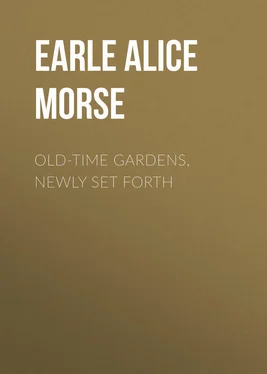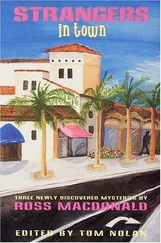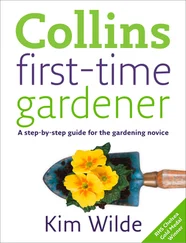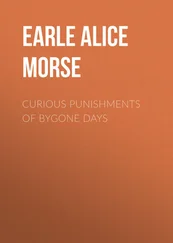Alice Earle - Old-Time Gardens, Newly Set Forth
Здесь есть возможность читать онлайн «Alice Earle - Old-Time Gardens, Newly Set Forth» — ознакомительный отрывок электронной книги совершенно бесплатно, а после прочтения отрывка купить полную версию. В некоторых случаях можно слушать аудио, скачать через торрент в формате fb2 и присутствует краткое содержание. Жанр: foreign_antique, foreign_prose, на английском языке. Описание произведения, (предисловие) а так же отзывы посетителей доступны на портале библиотеки ЛибКат.
- Название:Old-Time Gardens, Newly Set Forth
- Автор:
- Жанр:
- Год:неизвестен
- ISBN:нет данных
- Рейтинг книги:3 / 5. Голосов: 1
-
Избранное:Добавить в избранное
- Отзывы:
-
Ваша оценка:
- 60
- 1
- 2
- 3
- 4
- 5
Old-Time Gardens, Newly Set Forth: краткое содержание, описание и аннотация
Предлагаем к чтению аннотацию, описание, краткое содержание или предисловие (зависит от того, что написал сам автор книги «Old-Time Gardens, Newly Set Forth»). Если вы не нашли необходимую информацию о книге — напишите в комментариях, мы постараемся отыскать её.
Old-Time Gardens, Newly Set Forth — читать онлайн ознакомительный отрывок
Ниже представлен текст книги, разбитый по страницам. Система сохранения места последней прочитанной страницы, позволяет с удобством читать онлайн бесплатно книгу «Old-Time Gardens, Newly Set Forth», без необходимости каждый раз заново искать на чём Вы остановились. Поставьте закладку, и сможете в любой момент перейти на страницу, на которой закончили чтение.
Интервал:
Закладка:
One marked characteristic of the front yard was its lack of weeds; few sprung up, none came to seed-time; the enclosure was small, and it was a mark of good breeding to care for it well. Sometimes, however, the earth was covered closely under shrubs and plants with the cheerful little Ladies' Delights, and they blossomed in the chinks of the bricked path and under the Box edges. Ambrosia, too, grew everywhere, but these were welcome – they were not weeds.
Our old New England houses were suited in color and outline to their front yards as to our landscape. Lowell has given in verse a good description of the kind of New England house that always had a front dooryard of flowers.
"On a grass-green swell
That towards the south with sweet concessions fell,
It dwelt retired, and half had grown to be
As aboriginal as rock or tree.
It nestled close to earth, and seemed to brood
O'er homely thoughts in a half-conscious mood.
If paint it e'er had known, it knew no more
Than yellow lichens spattered thickly o'er
That soft lead gray, less dark beneath the eaves,
Which the slow brush of wind and weather leaves.
The ample roof sloped backward to the ground
And vassal lean-tos gathered thickly round,
Patched on, as sire or son had felt the need.
But the great chimney was the central thought.
It rose broad-shouldered, kindly, debonair,
Its warm breath whitening in the autumn air."
Sarah Orne Jewett, in the plaint of A Mournful Villager , has drawn a beautiful and sympathetic picture of these front yards, and she deplores their passing. I mourn them as I do every fenced-in or hedged-in garden enclosure. The sanctity and reserve of these front yards of our grandmothers was somewhat emblematic of woman's life of that day: it was restricted, and narrowed to a small outlook and monotonous likeness to her neighbor's; but it was a life easily satisfied with small pleasures, and it was comely and sheltered and carefully kept, and pleasant to the home household; and these were no mean things.
The front yard was never a garden of pleasure; children could not play in these precious little enclosed plots, and never could pick the flowers – front yard and flowers were both too much respected. Only formal visitors entered therein, visitors who opened the gate and closed it carefully behind them, and knocked slowly with the brass knocker, and were ushered in through the ceremonious front door and the little ill-contrived entry, to the stiff fore-room or parlor. The parson and his wife entered that portal, and sometimes a solemn would-be sweetheart, or the guests at a tea party. It can be seen that every one who had enough social dignity to have a front door and a parlor, and visitors thereto, also desired a front yard with flowers as the external token of that honored standing. It was like owning a pew in church; you could be a Christian without having a pew, but not a respected one. Sometimes when there was a "vendue" in the house, reckless folk opened the front gate, and even tied it back. I attended one where the auctioneer boldly set the articles out through the windows under the Lilac bushes and even on the precious front yard plants. A vendue and a funeral were the only gatherings in country communities when the entire neighborhood came freely to an old homestead, when all were at liberty to enter the front dooryard. At the sad time when a funeral took place in the house, the front gate was fastened widely open, and solemn men-neighbors, in Sunday garments, stood rather uncomfortably and awkwardly around the front yard as the women passed into the house of mourning and were seated within. When the sad services began, the men too entered and stood stiffly by the door. Then through the front door, down the mossy path of the front yard, and through the open front gate was borne the master, the mistress, and then their children, and children's children. All are gone from our sight, many from our memory, and often too from our ken, while the Lilacs and Peonies and Flowers de Luce still blossom and flourish with perennial youth, and still claim us as friends.
At the side of the house or by the kitchen door would be seen many thrifty blooms: poles of Scarlet Runners, beds of Portulacas and Petunias, rows of Pinks, bunches of Marigolds, level expanses of Sweet Williams, banks of cheerful Nasturtiums, tangles of Morning-glories and long rows of stately Hollyhocks, which were much admired, but were seldom seen in the front yard, which was too shaded for them. Weeds grew here at the kitchen door in a rank profusion which was hard to conquer; but here the winter's Fuchsias or Geraniums stood in flower pots in the sunlight, and the tubs of Oleanders and Agapanthus Lilies.
The flowers of the front yard seemed to bear a more formal, a "company" aspect; conventionality rigidly bound them. Bachelor's Buttons might grow there by accident, but Marigolds never were tolerated, – they were pot herbs. Sunflowers were not even permitted in the flower beds at the side of the house unless these stretched down to the vegetable beds. Outside the front yard would be a rioting and cheerful growth of pink Bouncing Bet, or of purple Honesty, and tall straggling plants of a certain small flowered, ragged Campanula, and a white Mallow with flannelly leaves which, doubtless, aspired to inhabit the sacred bounds of the front yard (and probably dwelt there originally), and often were gladly permitted to grow in side gardens or kitchen dooryards, but which were regarded as interloping weeds by the guardians of the front yard, and sternly exiled. Sometimes a bed of these orange-tawny Day Lilies which had once been warmly welcomed from the Orient, and now were not wanted anywhere by any one, kept company with the Bouncing Bet, and stretched cheerfully down the roadside.
When the fences disappeared with the night rambles of the cows, the front yards gradually changed character; the tender blooms vanished, but the tall shrubs and the Peonies and Flower de Luce sturdily grew and blossomed, save where that dreary destroyer of a garden crept in – the desire for a lawn. The result was then a meagre expanse of poorly kept grass, with no variety, color, or change, – neither lawn nor front yard. It is ever a pleasure to me when driving in a village street or a country road to find one of these front yards still enclosed, or even to note in front of many houses the traces of a past front yard still plainly visible in the flourishing old-fashioned plants of many years' growth.
CHAPTER III
VARIED GARDENS FAIR
"And all without were walkes and alleys dight
With divers trees enrang'd in even rankes;
And here and there were pleasant arbors pight
And shadie seats, and sundry flowering bankes
To sit and rest the walkers wearie shankes."
Many simple forms of gardens were common besides the enclosed front yard; and as wealth poured in on the colonies, the beautiful gardens so much thought of in England were copied here, especially by wealthy merchants, as is noted in the first chapter of this book, and by the provincial governors and their little courts; the garden of Governor Hutchinson, in Milford, Massachusetts, is stately still and little changed.
English gardens, at the time of the settlement of America, had passed beyond the time when, as old Gervayse Markham said, "Of all the best Ornaments used in our English gardens, Knots and Mazes are the most ancient." A maze was a placing of low garden hedges of Privet, Box, or Hyssop, usually set in concentric circles which enclosed paths, that opened into each other by such artful contrivance that it was difficult to find one's way in and out through these bewildering paths. "When well formed, of a man's height, your friend may perhaps wander in gathering berries as he cannot recover himself without your help."
Читать дальшеИнтервал:
Закладка:
Похожие книги на «Old-Time Gardens, Newly Set Forth»
Представляем Вашему вниманию похожие книги на «Old-Time Gardens, Newly Set Forth» списком для выбора. Мы отобрали схожую по названию и смыслу литературу в надежде предоставить читателям больше вариантов отыскать новые, интересные, ещё непрочитанные произведения.
Обсуждение, отзывы о книге «Old-Time Gardens, Newly Set Forth» и просто собственные мнения читателей. Оставьте ваши комментарии, напишите, что Вы думаете о произведении, его смысле или главных героях. Укажите что конкретно понравилось, а что нет, и почему Вы так считаете.












